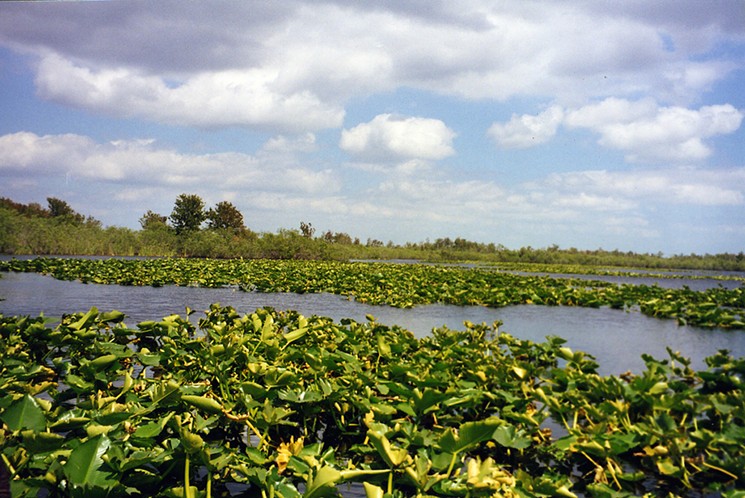There is no more obvious symbol of the sugar industry's stranglehold on Florida, or its waning grip on the state Legislature, than the story of the Everglades reservoir plan.
The idea — to buy land south of Lake Okeechobee back from sugar growers in order to let water flow freely south to the Glades after close to a century of misdirection and mismanagement — was concocted in 1996 under the administration of then-Gov. Lawton Chiles and passed by Congress in 2000. The sugar lobby, led by the megawealthy, Florida Crystals-owning Fanjul family, initially claimed it supported the plan but then fought the reservoir at every step for the next two decades.
But after more than 20 years, a $1.5 billion, 78-billion-gallon version of the plan finally passed through both houses of the Legislature last night in a move Everglades conservationists call historic and "the most significant victory for Everglades restoration in more than two decades."
"If you really take a look at how far it’s actually come, yesterday was a really significant moment," Everglades Trust President Kimberly Mitchell tells New Times. "It was a confluence of things that lined up like never before."
The bill, SB 10, now heads to Gov. Rick Scott's desk, where he is expected to sign it into law. The bill lets the state convert 14,000 acres of government land from shallow-water reservoirs to deep-water reservoirs and gives the state the ability to begin acquiring extra land through purchases and land swaps. The bill does not let the state take land through eminent-domain proceedings.
Mitchell credited three things for finally pushing state lawmakers over the edge after all this time: the tenacity of anti-sugar groups such as Bullsugar.org and Captains for Clean Water; the doggedness of Senate President Joe Negron, who sponsored the bill; and, most important, the massive blooms of toxic, neon-green algae that formed along Florida's coast and on Lake Okeechobee, which Mitchell says alerted the public to the sheer scope of the area's pollution problems.
"This was the year Big Sugar couldn’t get away from their problems, no matter how bad they wanted to," Mitchell says. "Then NASA sent us a photo where you could see this toxic blue-green algae on Lake Okeechobee from space. The problem had always been that there was damage being done, but it wasn’t so visible to the average person. Now you could really, viscerally see it, four inches thick of rotten death."
The plan aims to let the River of Grass return to some semblance of natural normalcy after the U.S. Army Corps of Engineers diverted multiple rivers and water sources to the southern end of the Glades during the past century. In 2000, U.S. Congress passed the Comprehensive Everglades Restoration Plan, which forced both federal and state officials to develop a plan to route water south to refresh stagnant swampland in South Florida.
Sugar lobbyists fought the measure at nearly every step: The sugar industry hired a team of 64 lobbyists to oppose the deal, and Big Sugar front groups such as Glades Lives Matter, composed of farmers who said the reservoir would put them out of jobs, fought the reservoir. Despite the fact that the plan to build a reservoir south of Lake O had been approved at the federal level since 2000, the sugar lobby — and the Gov. Rick Scott-tied South Florida Water Management District — began arguing that a reservoir south of the lake wasn't necessary and that building reservoirs above or next to the lake would have worked instead. (Not true, scientists said.)
Anti-restoration activists even fought local attempts to simply support the reservoir plan: After Miami-Dade County Commissioner Daniella Levine Cava introduced a measure that would have thrown verbal support behind Negron's plan, the rest of the county commission voted the symbolic measure down after outcry from pro-sugar forces.
Negron had originally pitched a $2.4 billion plan, which would have sucked up 60,000 acres of farmland south of Lake O. The final bill that passed ended up roughly $1 billion short of that goal, but Glades activists such as Mitchell say that's fine for now. For once, she says, the state passed a measure that wasn't in the interests of the sugar lobby.
"They're finally starting now," Mitchell says. "We've been doing this and watching this for years. Sugar could have pushed the deadline to start back. To give you an idea of how long this had been delayed already, this was the number two priority authorized in the year 2000."
Source: Miami News Times, Full Article


